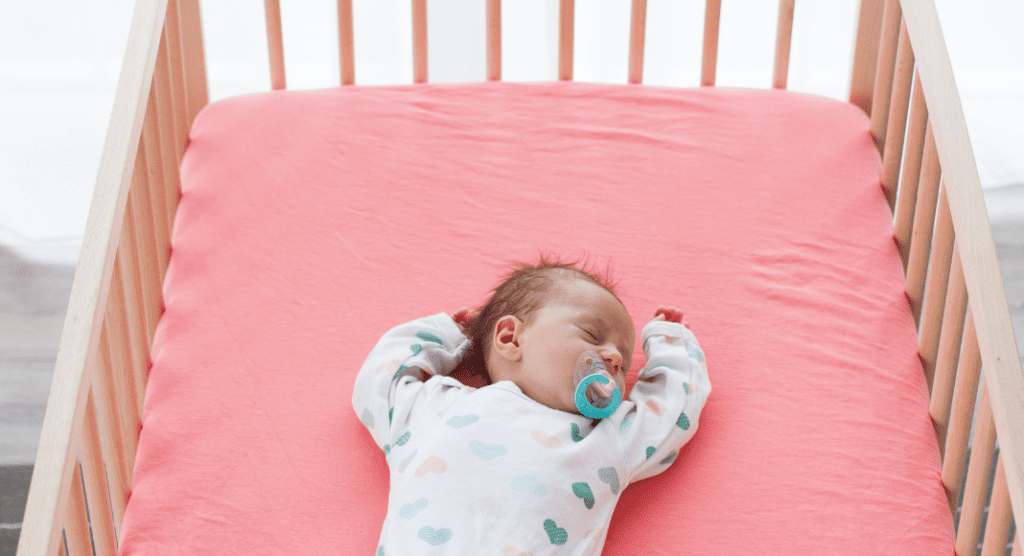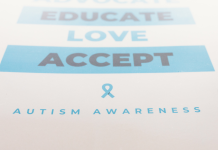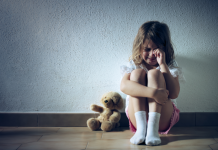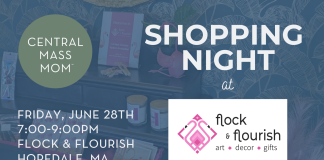 When I was pregnant with my oldest child, I got so many recommendations for all sorts of products. Everyone was a baby expert. You have to get a dock-a-tot, your baby will sleep through the night on day one. Get a rock-n-play, it’s great for all sleep! It’s okay to co-sleep, you can fall asleep while breastfeeding! My kid slept through the night by 6 weeks old, so if you do these things your baby will sleep too. I could go on and on about all the advice I got while I was pregnant and even in the early weeks and months of my child’s life.
When I was pregnant with my oldest child, I got so many recommendations for all sorts of products. Everyone was a baby expert. You have to get a dock-a-tot, your baby will sleep through the night on day one. Get a rock-n-play, it’s great for all sleep! It’s okay to co-sleep, you can fall asleep while breastfeeding! My kid slept through the night by 6 weeks old, so if you do these things your baby will sleep too. I could go on and on about all the advice I got while I was pregnant and even in the early weeks and months of my child’s life.
Who should give sleep advice?
The advice that was missing in those early days? Safe sleep advice. The true data and the real recommendations from the experts (like the AAP). Not from other parents, not from my OB, not from the hospital, and not from our pediatrician. Not one person explained to me what the safe sleep guidelines were.
I foolishly followed the other parents’ advice. Thinking wow, sleeping through the night by the time my measly 6 weeks of maternity leave was over. I have to do it. I have to try it. I cannot afford to be sleepy at my job, nor could my spouse.
Finding Out for Myself
During those late-night nursing sessions, I started to do my research. Information about sleep in general, sleep needs, and schedules. Then tips and tricks to get my child to sleep. Then I stumbled upon the AAP’s safe sleep recommendations and I was horrified. There was very little I was doing safely when it came to my child’s sleep, and I had not a clue. I started to dig into the data. How dangerous could it really be? The more I dug, the more horrified I was, and realized we had to change what we were doing before something dreadful happened to our child.
What are the safe sleep recommendations?
Alone
Cribs, bassinets, and pack ‘n’ plays should be void of any pillows, blankets, stuffed animals, or other soft, loose objects. Bumper pads and similar products are not recommended, as they also cause suffocation and strangulation risks.
Back
Newborns and infants should be placed on their back for every sleep until age 1 year. Side and belly sleeping is not advised. However, if the baby is placed to sleep on their back but is able to roll on their own to their belly, that is okay.
Crib
Sleep surfaces should be firm and flat, in a safety-approved crib, bassinet, or pack ‘n’ play. Soft sleep surfaces (think couch, adult bed, etc.) pose a suffocation risk. It is also important to make sure the location of the crib is safe. Make sure that it is not close to any curtains or cords. Also, consider its proximity to windows and open outlets. Lastly, if you have any wall art above the crib, you should move the crib one foot away from the wall.
Room Sharing, Not Bed-Sharing
This means your child is in a safe sleep space within the same room as the parents, but not in the same bed as the parents. Studies show that co-sleeping in the same bed increases the risk of SIDS, but an infant sharing a room with parents can reduce the risk. AAP recommends room-sharing until 1 year of age.
Breastfeeding
Some studies have shown that breastfeeding can reduce the risk of SIDS. The AAP recommends breastfeeding until at least 6 months of age. However, you must make the decision on what works best for your family.
Pacifier
Studies have shown that pacifiers can reduce the risk of SIDS due to positioning the tongue to prevent obstruction. It is also believed that the pacifier influences a safe sleeping position.
Avoid Alcohol and Illicit Drug Use
Parents using alcohol and drugs can put infants at high risk, especially if combined with bedsharing.
Avoid Overheating
Overheating can cause sleep disturbances and health complications such as seizures.
Avoid Commercial Devices Not Approved for Safe Sleep.
This means skip the inclined sleepers and dock-a-tots and other products that claim they either reduce SIDS or help newborns sleep through the night.
But my kid survived, so will yours.
Survivor bias can be a dangerous thing. Just because your child wasn’t one of the babies who died in the rock-n-play doesn’t mean that person you just gifted it to will have a baby who survives its use. Just because you survived riding in the back of a pickup truck doesn’t mean it’s safe.
But the IG influencers say…
Just stop. Stop listening to these people. They are paid by the companies pushing their unsafe sleep products. They push bed-sharing because some random guy has decided that it’s normal and natural and he’s determined a “safe” way to do it. Know better, do better. If we had access to the same information and data 200 hundred years ago, co-sleeping would have ended then! The fact is that no one knew better. The science wasn’t there yet and the studies weren’t done. Now we know. Now we can change our behavior to do the best we can for our children.











[…] When I became a first time parent, I did not have realistic sleep expectations. A bunch of my friends had told me all about how their kids slept through the night and that dream feeds were the best. Buy this product, or that product, and it will change your life. Not one little bit of that was true. There was no sleeping through the night, dream feeds were not a dream, and many of those products were actually dangerous! […]